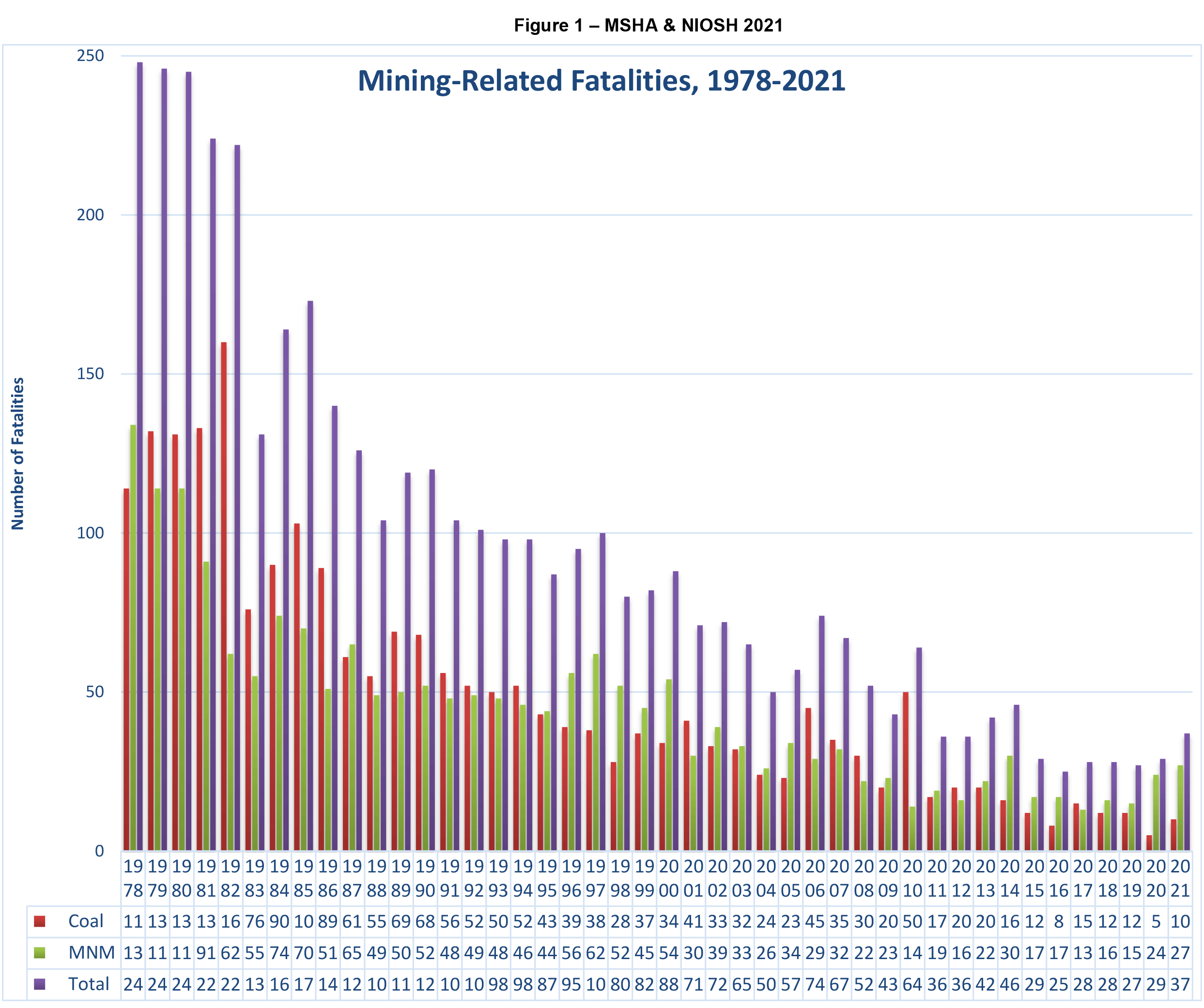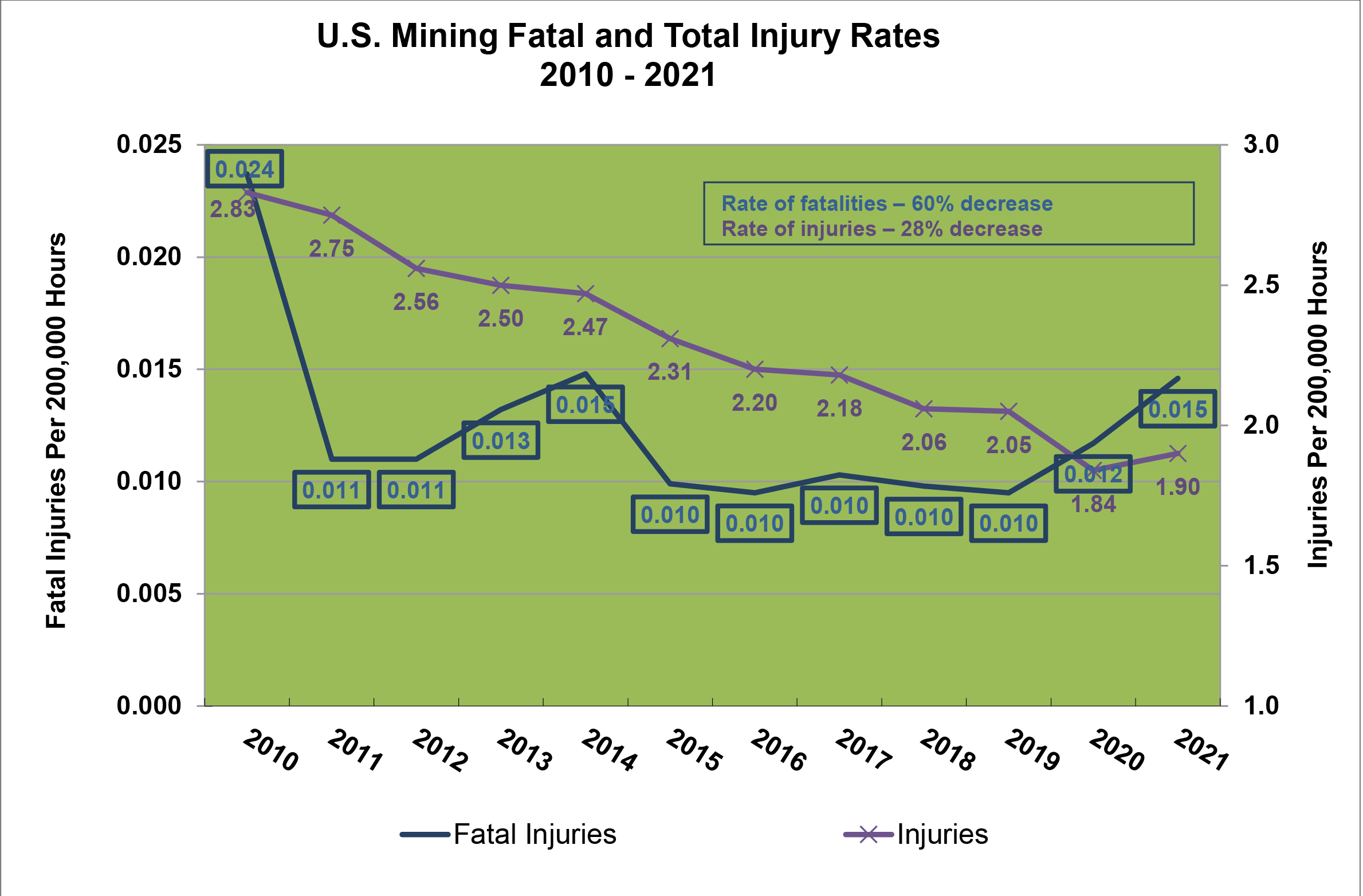Listen Now
SME Statement
Employee safety and health is of paramount importance for SME and its members. Many SME members work daily in our Nation’s mines or have a direct impact on others that work in the mines.
SME supports the mission and purpose of the U.S. Mine Safety and Health Administration (MSHA), which is to prevent all injuries and disease from mining and to promote safe and healthful workplaces for the Nation's miners.
SME supports the National Institute for Occupational Safety and Health and university research geared toward prevention of all occupational injuries and illnesses.
SME maintains that laws and regulations governing the mining industry need to be based on sound scientific principles to ensure that workplace solutions can be readily implemented and that solutions to safety and health problems are fully realized.
Issue
- Year-over-year improvements in safety performance are continuing (Figures 1 and 2).
- If increasing minerals prices lead to an increase in employment in the mining industry and less experienced miners enter the workforce, it is most important to provide thorough and improved resources and training in mine safety and health.
- MSHA should continue to work collaboratively with industry and labor to create a safe and healthy workplace, including enhanced training and education, and not rely on the promulgation and enforcement of regulations where the technologies are not demonstrated.
Background
Passage of the Coal Mine Health and Safety Act of 1969 was the genesis of a new regulatory era for mining in the U.S. and resulted in a strong downward trend in mining fatalities.
The Federal Mine Safety and Health Act, passed in 1977, requires regular inspections of all surface mines, mandatory training, creation of rescue teams for all underground mines, and involvement of mine employees and their representatives in safety and health.
MSHA, a division of the U.S. Department of Labor, conducts inspections and investigations at mine sites to ensure compliance with mine safety and health laws and regulations. MSHA regulates mining through site observations and, if necessary, the issuance of citations and corrective orders. It also investigates mine accidents, complaints of discrimination related to employee health and safety rights, reports of hazardous conditions, and criminal violations; issuing safety and health standards; reviewing operators’ mine plans; conducting safety and health training; and leading outreach programs via its Technical Support division.
The Mine Improvement and New Emergency Response (MINER) Act, passed in 2006 with strong industry and labor support, has contributed to improved mine safety and emergency preparedness. Mine operators have made considerable progress in adding self-contained self-rescuers, improving and increasing safety training for miners, developing post-accident communication systems, increasing the strength of mine seals, installing survival chambers, and in increasing the number of mine rescue teams. These efforts have resulted in a dramatic decline in fatalities and injuries, as demonstrated below:


SME Statement of Technical Position
- SME is committed to improving the safety and health of the mining industry’s workforce.
- SME encourages mining companies to develop and implement a proactive health and safety management system and complementary occupational health program.
- The Mine Safety Technology and Training Commission, an independent panel of technical experts, was convened to thoroughly examine the mechanics of mine operations and provide recommendations to improve mine safety. Many of these recommendations go above and beyond the requirements of the MINER Act.
- Congress should evaluate the level of funding that would be commensurate with the need to support research and development, cultivate additional safety and technical professionals, and address the serious shortage of miners and mine supervisors for this industry.
- SME is committed to making expertise available to enhance workplace safety and health. Further, SME is prepared to facilitate discussions among policymakers, regulators, operators, miners or their representatives, researchers, labor and independent health and safety specialists to reach the mutual goal of improved workplace safety and health in America’s mines and processing facilities.
